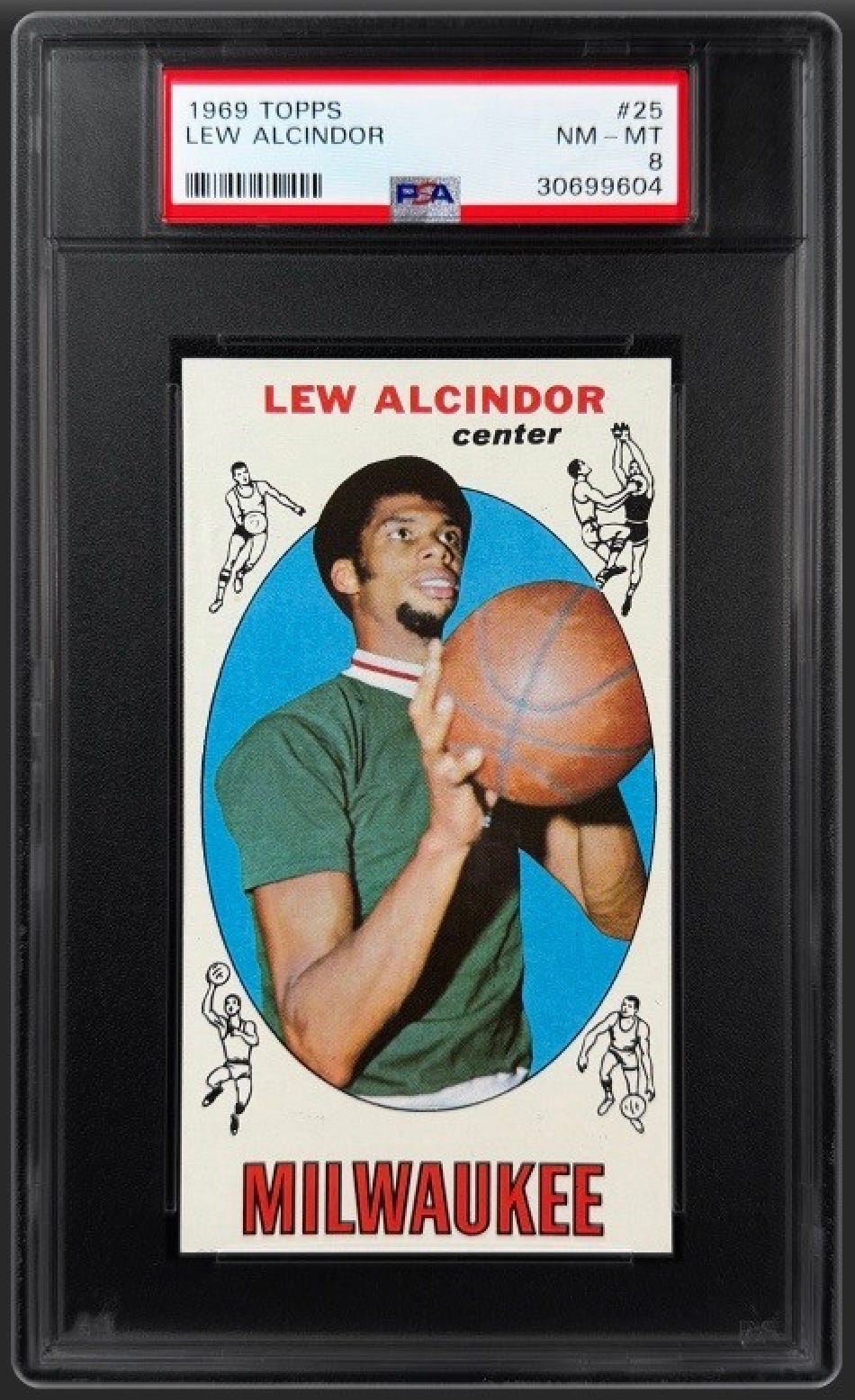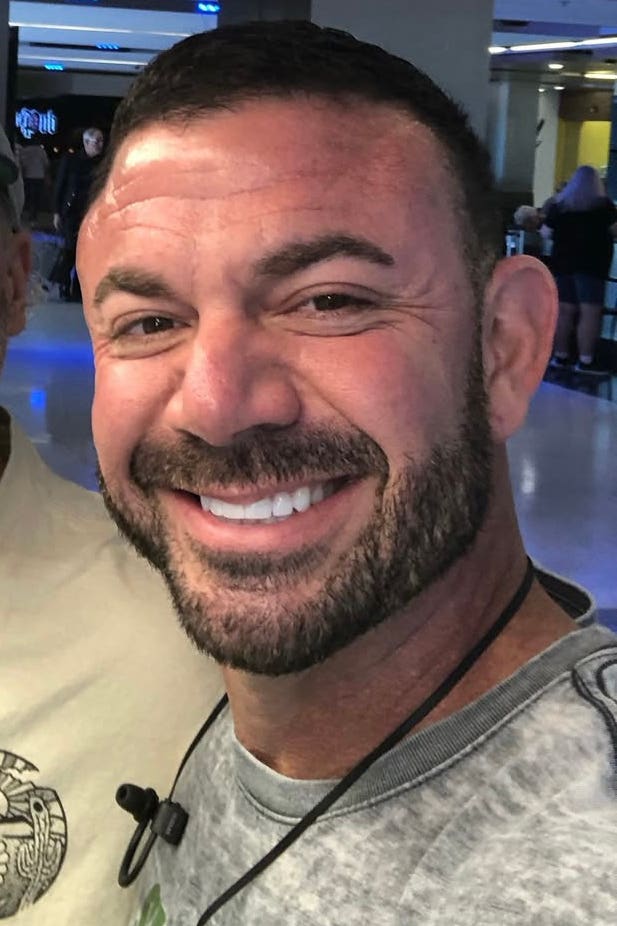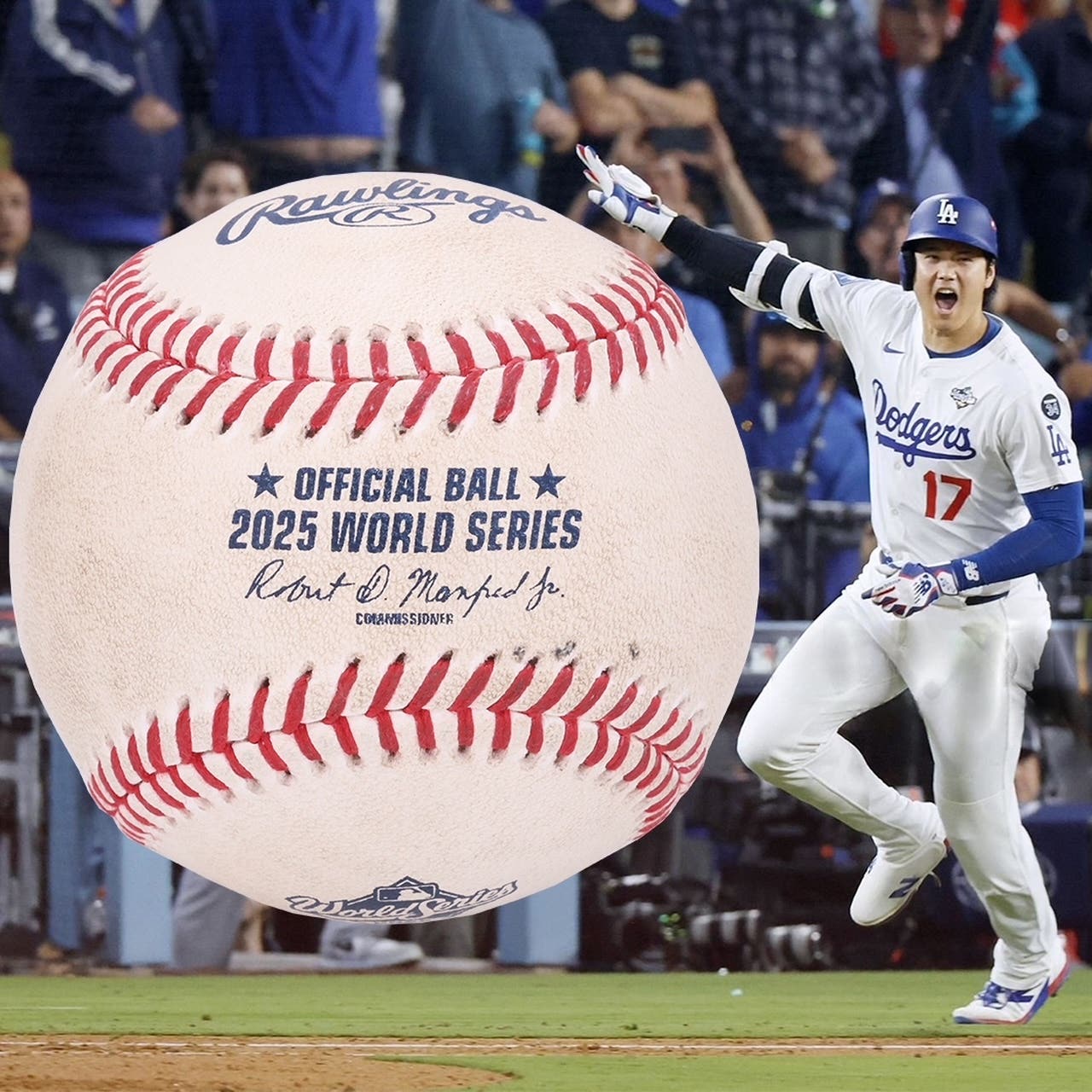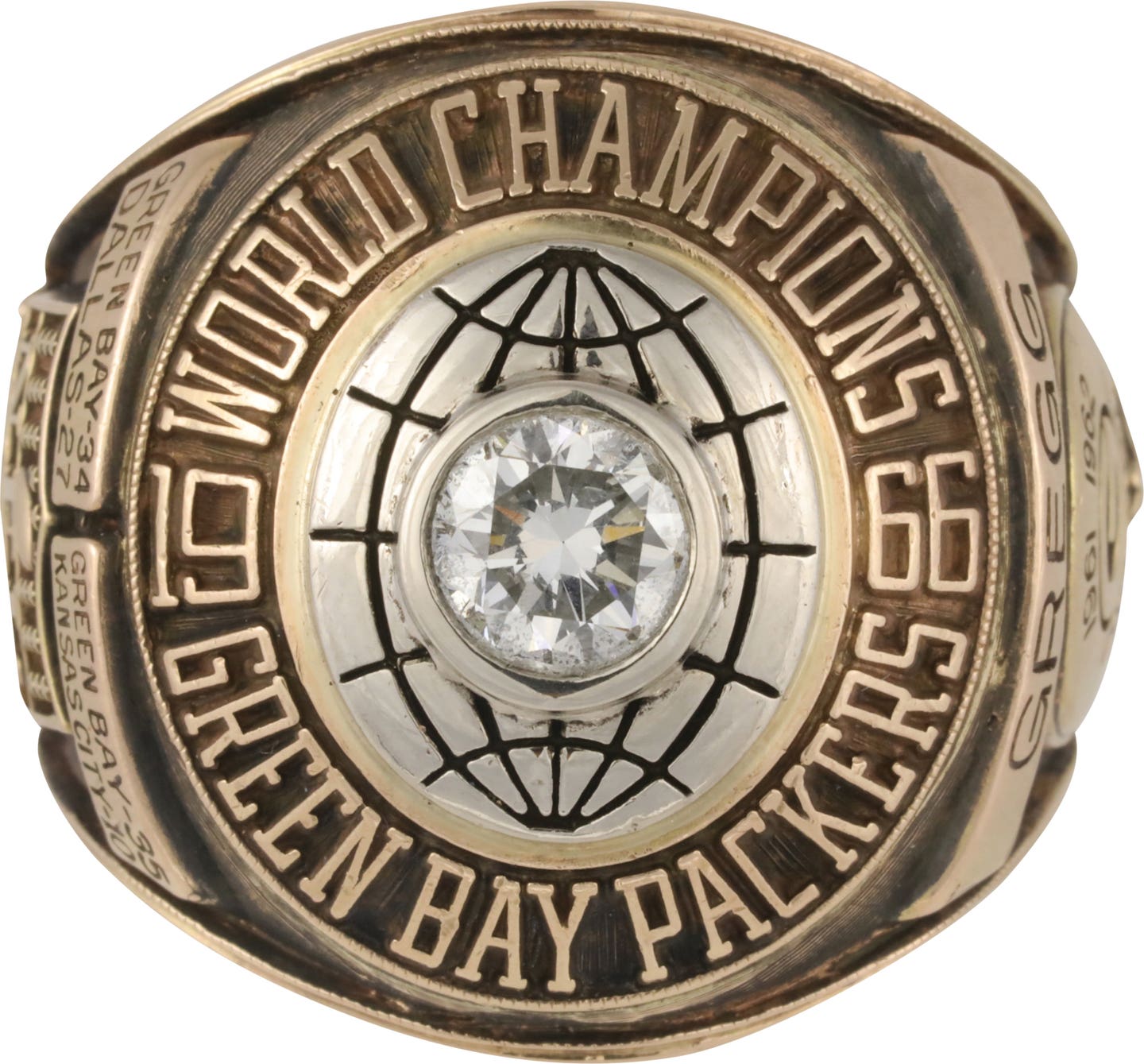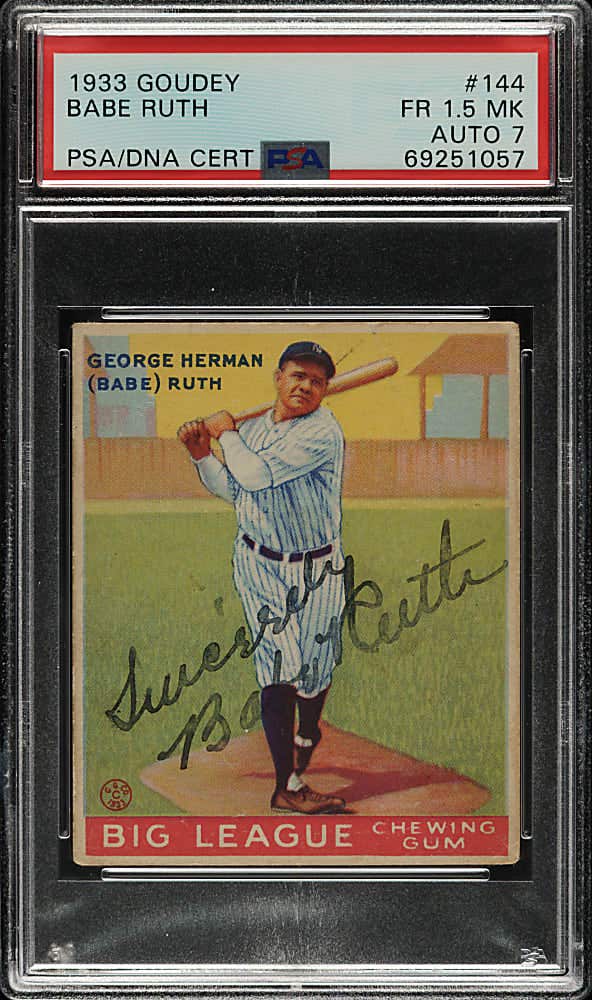Collecting 101
Malta a collector turned bat authenticator
Dave Bushing and John Taube, along with this week’s interviewee are the most prominent bat authenticators in the hobby today. Bushing and Taube have been interviewed for this series previously so this week we reach the desk of Taube’s partner in the PSA/DNA bat authentication service, Vince Malta, who is a longtime hobbyist and author.
Malta tells us about his new book, the status of the marketplace and his opinions of how the authentication systems should work.
As always, the best way to react to anything said here is with a letter to the editor.
SCD: First tell us about your history in the hobby and how you evolved into what you are doing today.
Vince Malta: I started as a collector back in the late 1980s, and I collected baseball cards. I love baseball; I love history. Bats were introduced to me as a collectible in the late 1980s. So I really started out as a collector and there wasn’t much printed or known about game-used baseball bats. I slogged along through the “burning” period — you learn from your mistakes and go on. Through the burning period process and wanting to learn more about what I collect, I really tried to do a lot of research, not relying so much on people, but on what I believed to be true. I really love this hobby very much, and I tried to do independent research, more than what was known out there, and through a process of more than 15 years, I’m at the point where I am now, where I believe I have a good foundation and a good knowledge of the hobby and how it relates to game bats, and I want to help others by sharing that knowledge and the book that I’m in the process of finishing. The book has taken almost eight years to compile the necessary information. The book is 100 Years of the Louisville Slugger, and it will comprise the period from 1905-2005. I co-authored the first book dedicated to game-used baseball bats, called Bats, self-published by us in 1995, Off The Fence Publishing. Back then, we didn’t have access to the Louisville Slugger shipping records. We would do surveys of bats in people’s collections. We’d ask them what model numbers they had, what’s the length and weight, etc., and we put it in this book. Some of these bats were “good” and some were not. I contacted the president of Louisville Slugger, Jack Hillerich, and I said, “This book could be so much better if you opened up the records to collectors and shared the information in there of bats that were produced by Louisville Slugger. He opened up the doors to us and shared the records, with a few provisions — that the shipping records would not be reproduced, and that we would not publish trade secrets, the weights and lengths of players currently in the game. So I concentrated a lot of my research on the Hall of Famers and retired players. My book will contain detailed reference charts of lengths, weights and model numbers, by the year the player ordered them. I’d like to share this information with collectors because I think it will provide a very strong foundation on which to build the hobby upon: The very records of Louisville Slugger. I don’t believe it gets better than that in our hobby. We don’t know how many baseball cards are produced by any given manufacturer in a year, but Louisville Slugger has information about how many bats were shipped to a given player in a given year. It’s a wonderful reference to rely upon. While it’s only one bat manufacturer, it’s a very significant one over that 100-year period. Collectors can rely upon something that is more than fables and stories about a given bat. Having this information, we can rely upon shipping records, because the stories are just that. SCD: Besides you and Dave Bushing, how many people have the Louisville Slugger records?
VM: Outside of Louisville Slugger, about five of us do. SCD: The authenticators are valuable to collectors in part because of access to these records. Are the authenticators worried collectors might not need them as much because these records will be available in your book?
VM: I don’t worry about that whatsoever. I believe if you empower people with knowledge, the hobby will grow. That’s my big concern — that the hobby continues to grow. And it will not grow if the information is not disseminated and we have wrong information distributed to collectors. They could say, “What is the truth? I’m done collecting,” after they’ve spent tens of thousands of dollars on a bat or group of bats. Dissemination of this information is invaluable in allowing the hobby to grow. When we’re giving an authentication, it should be consistent with the shipping records, and if it’s not, you have to have some very good evidence to the contrary. SCD: In your evolution from collector to author and authenticator, were you ever a dealer?
VM: No, I’ve never been a dealer, nor do I ever authenticate an item that I sell. I’m in real estate, and as a Realtor, I’m bound by a code of ethics. I don’t believe there is any type of ethics in this hobby, because it’s a hobby, but it’s becoming a very expensive hobby. When you authenticate something, you have to instill some trust in what you’re authenticating. John Taube and I have a relationship where if John is dealing a bat, I also have to authenticate it. I don’t own any bats that John is selling or dealing. It allows my independent review of the bat. If I say it is not good, John cannot issue a certification, we must both agree. I hope that that provides some level of confidence with a bat that John is selling. I never authenticate a bat that I own. I do sell a bat once in a while, but it can not be accompanied by a PSA certification, without notifying the buyer that I own the bat. SCD: What’s your take on the authenticators who do have a financial interest in the items they’re authenticating? Dave Bushing, for instance, took a lot of heat for owning some or all of the Joe DiMaggio streak bat that he authenticated for SCD Authentic last year, and most authenticators, including John Taube, buy and sell.
VM: That’s their business model. I have my own. I would have not authenticated the bat if I owned the bat. Dave was really put under scrutiny because he did authenticate a bat that he owned, or owned a piece of, which was really unfortunate. John and I, later independently authenticated the bat. I hadn’t even seen the bat until well after all the controversy arose. Ultimately, John and I authenticated the bat as being a bat Joe could have used during the streak. We have a slightly different business model. I think an authenticator needs to take the stance of being independent and unbiased. SCD: What’s your response to those who say an authenticator should never be financially interested in the field in which they work?
VM: I think it’s a conflict of interest if you are dealing the bat that you are authenticating. The verdict is out on that — collectors would like to know that this conflict exists. They want to be made aware of it. We will always make people aware that we own the item. (Note: Bushing’s company MEARS has a checked box on its letters of authenticity indicating if an authenticator had a financial interest in the bat.) SCD: Who do you authenticate for? When you look at a bat, is it always for PSA/DNA?
VM: I only do it now for PSA/DNA. I was formerly independent, and then I joined up with John years ago and we affiliated ourselves with Grey Flannel. We then became independent where we could go under contract with PSA so we’re not tied to a specific auction house or dealer. SCD: What is your relationship with www.gameuseduniverse.com?
VM: Game Used Universe is interested in having knowledge shared. They want to assemble a group of authenticators in different areas of the sports memorabilia market, as a clearinghouse for dissemination of accurate information about authentication. My relationship with them is that they’ll be promoting my book through their website. Chris Cavalier saw some of the information in my book and I believe was impressed, that this was something that needs to be out there. My book is a very focused book, a limited-interest book that focuses on the game-used bat collector. There’s very limited demand for a book of that nature, so Chris is helping me distribute the book to collectors who sign up to the website. Eventually, we’ll have columns and blogs on their website. I will welcome every criticism of the book, as long as it’s done in the vein of having better information in it. SCD: Give me a breakdown of your products and services, with costs and shipping, etc.
VM: John handles the business aspects of that, so you’d have to get that from John. Because of my time constraints, I only have the ability to look at what’s put in front of me, John handles the business aspects. (Note: SCD checked the PSA/DNA website for the fee structure, and it’s presented here.) FeeBat Value Tier 1$500 $25,000+ Tier 2$375 $10,000 - $24,999 Tier 3$250 $5,000 - $9,999 Tier 4$150 $1,000 - $4,999 Tier 5$75 $999 or less
SCD: What’s your opinion on what criteria should be used to establish what the authentication fee should be?
VM: A lot of this has been tied to the value of the item because that is associated with the risk involved. I don’t think that should be the criteria; I think it is the time it takes to authenticate. I think that’s what will prevail over a period of time. That will have an effect on what bats do get submitted. For instance, if the bat was made last year and you want it authenticated, it should not take us a long time in which to do that, because a lot of information is readily available. We don’t have to scour through pictures and pictures to see the attributes of a Vladimir Guerrero bat — we can just look at the television, and the number of items that get submitted to us for the current players. The value of the item is a cut-and-dried, easy gauge on which to do it, but I think the trend will be to use the time it takes and the level of research it takes to authenticate the item. SCD: Do you have any formal or scientific training that assists you in being a bat authenticator, or are your tools mainly the experience of being a bat collector?
VM: It’s the latter rather than the former; I don’t think there is any scientific way. When I went to Louisville Slugger, they said, “We’re in the business of making bats. We never knew that this would be looked at or examined by collectors.” There’s no science in bat collecting. There’s always something that can come out and disprove a theory that you had regarding bats made during a certain period of time, or a branding used during a certain period. At any time, Louisville Slugger could have pulled an old brand out of a drawer and used it on a bat, throwing off 10 years of research, thinking that bats from this period only look like this. So, it’s not a science, it’s fact gathering. I have studied thousands of bats in the vaults of Louisville Slugger, and notable collections in the United States. Marshall Fogel was very instrumental. He has a huge collection, a game-used bat from virtually every Hall of Famer in his collection. Marshall picked me up at the airport, drove me to his house and allowed me to see his collection. I studied the Hall of Fame’s collection in their basement. It’s literally looking at thousands and thousands of bats and studying them. It’s very nerdy, but very helpful in discovering emerging patterns that collectors would like to know. People want to know if it’s a Duke Snider bat as a Brooklyn Dodger bat or a Los Angeles Dodger bat. The information in the book will help them determine that, sometimes on their own. Going back to the question regarding if the information in this book will do away with the need for authenticators, not really. You can have this information, but you need to apply it and you need to determine if something else is going on with this bat. There’s a lot of fraud in our hobby. People will try to make bats look a certain way, and our experience will be able to differentiate legitimate game-use, and is the bat truly what it’s purported to be, if it’s a bat made two years ago and made to look old, or is it a bat that truly is 45 or 50 years old? There will always be a need for authenticators in the hobby, and also for the standardization that grading offers, like it has for baseball cards, so if it is on eBay and it has a grade on it from PSA/DNA, you don’t have to trust that it is what the seller says it is. SCD: The grading of bats must add a new element for you guys, to not only determine its validity, but assign a grade to it.
VM: It does add a step. The interesting thing is there is some controversy involving grading, because it is so subjective. We try to provide criteria that people can rely upon. We’re grading the level of confidence that the bat was used by the player whose name is on the bat. If a bat can grade a 1, how is that differentiated from a 9? Being a 1 it infers that it could be game-used, because it graded anything at all. We’re not going to grade bats we feel were not used by the player. You’re not going to find a certification on all bats. Some are in the could-be category and they’re going to grade low, but when we believe there’s no way the player could have used the bat, it’s not going to be graded. SCD: So that’s different from MEARS, which has grades A1-A4 that aren’t established as being game-used?
VM: That’s meaningless to a lot of collectors. A 3 Ty Cobb bat means Ty Cobb could have used that bat. If there’s no way Ty Cobb could have used that bat, why should it grade a 3? I think you have to look at things from the perspective of the people out there relying on these letters, and more importantly, the verbiage that the seller of the bat is using independent of the letter. That’s two different things. I always have to tell people, “Read the letter of authenticity, don’t read the description of the people selling the bat.” They can differ greatly. SCD: So if a bat has a letter from PSA/DNA, it could have been game used, and the probability that it was is graded 1-10?
VM: That’s correct. And it’s not going to be graded if we believe there’s no way it was game-used. SCD: How does your team work in terms of the authentications? Is your signature on every letter, and do you see every bat?
VM: Yes, I’m on the letter, and I see everything, either in person or digitally. SCD: Do you ever ask MEARS or Dave Bushing?
VM: We will sometimes get asked by the collector submitting the bat to confer with them. We need to do a confer with people that are outside our own sphere; we would not be doing a good service if we didn’t confer with Dave, especially if the person submitting the bat asks us to.
SCD: How important can you allow provenance to be? Can it affect whether you determine something to be game-used, or can it help move the grade by a number or two?
VM: It’s the latter. We believe provenance can help grade it higher. The bat must speak for itself first, and that’s very important and is looked at independent from everything that is said. If the provenance is, “Grandpa gave me this bat and told me that Babe Ruth used it and handed him the bat after the game.” If the bat is made in 1952, what good is that provenance? Now, if that is a bat that we can determine was made between 1926 and 1931, and it’s a game bat, and it’s got Babe Ruth scoring and other wonderful hints that Babe Ruth used the bat, and Grandpa told me that he gave me the bat after the Pirates game on such and such date, the provenance would add to what we already know about the bat. It can be a signed letter from the team, or a signed letter by Ruth, or side writing on the bat, meaning it was sent back to the factory so more bats could be made of those specifications. SCD: Are there some other contributors you have, a network of regional or niche experts?
VM: We really don’t have a network. Gameusedunivese.com is trying to get that together. I’m looked at as a specialist in one area, and there’s a guy who’s an expert in hockey shirts, and the gentleman who knows the Cardinals shirts. Why should we ignore what they do? I think that would be a great resource to tap into, and ultimately you have to look at what’s best for the customer and not for the profitability of your business model. SCD: Does your COA term your work an authentication or a professional opinion?
VM: We provide professional opinions that an item is authentic. There’s a difference between an authentication, where you’re tantamount to stating a fact that we believe this is true, whereas we’re just providing an opinion. You have to look at what the authenticator is stating, “This is our professional opinion that this bat could have been used.” You can put any word you want in front of it authentication or professional opinion, but you have to look at what’s written after it, to really determine what’s being done. If I try to say that I can determine with 100 percent certainty that Babe Ruth could have used this bat, that doesn’t mean anything. I can’t ever say it with 100 percent certainty, but I can do a lot of research, and determine that it’s my opinion that it was. A lot of criticism of authentication comes from the fact that some people are self-proclaimed experts. No one in a court of law has designated me an expert. I do expert work in real estate, and the judge will proclaim me an expert based on my experience in knowledge. No one does that in our hobby; no one says, “Based on your works, you are an expert,” we’re all self-proclaimed. SCD: What is your policy if something is disputed; what is your initial reaction to the dispute? Do you have them send it back?
VM: The policy is that John and I both have to agree. If we both agree that it’s not a game-used bat by the player whose name is on the bat, we’ll tell them that. They’ll ask us to review it, but unless there’s a change in the circumstances or the knowledge that we have, typically, we won’t. There has to be some change. If more information emerges from the hobby that would change the determination, then it could be changed. John and I feel better not authenticating something that we don’t know for sure, and having it made good later from something that emerges, rather than saying it’s good and items emerge showing the item is not good. So I’d rather err on the cautious side, rather than basing an authentication on a feeling in my gut. SCD: What would happen if you did make a mistake that was proven? Would you or PSA/DNA buy it back? I know of situations where on the autograph side, PSA/DNA has, or tried to, buy back the item to get it off the market. Have you ever been in that situation?
VM: To my knowledge, we haven’t had that mistake happen. PSA has a policy that’s independent from us; we’re independent contractors. Would we buy an item back? First of all, it would be very difficult to declare an item that we authenticated “not good” because we based that on something factual. You’d have to find facts that were wholly and conclusively against the facts that we have. How would you prove something wrong if it’s based on facts we have? This isn’t based on just our experience; the shipping records are something we really can rely upon, much more than just our experience. SCD: There are niche-area experts who really know a certain team or player. Would you be willing to utilize a network of experts consisting of collectors like that?
VM: Absolutely, if I know they exist and have taken the time and effort to look at these things, so long as they’re consistent with what I believe, and they’d have to convince me of that, then I’d welcome them with open arms. We’re not aware of a lot of these people. I’m a huge Mickey Mantle bat collector. People would call me regarding a Mantle bat, and I’m glad they did. I would do the same with others who had specialized knowledge. SCD: Are there names on your COAs of people who didn’t see the item, and similarly if your name is on the COA, did you always see that item?
VM: My signature appears on all of the items that I see. My signature would not be on an item on I didn’t see. Some people will quote my book and take it out of context, but they couldn’t say that “Vince Malta said this bat was good” if I didn’t see the bat. SCD: But by “see the bat,” you also mean scans?
VM: Let me clarify that. When I say physically, I don’t mean the bat has to be in front of me, they can send me pictures of the bat, and I’ll look at the relevant portions of the bat. I will view scans, and if I say, through looking at the scans, that I feel the bat’s good, they can use my name. SCD: Let me interject the question that some collectors are thinking, “How can you do that? Don’t you have to see the real bat?”
VM: Many times I don’t have to see the real bat. You show me a couple of areas and I can tell you, “No good,” right away. And I could also tell you, in many instances, “Good,” there are specific things I’m looking for. If I can’t tell by the scan, I will then request the item, because you’re right, in some instances, you must see the physical item. SCD: Do you have a history in the hobby and an exposure to major collections that aids in your ability to be an expert?
VM: Yes, and as I said earlier, I scoured the vaults at Louisville Slugger numerous times. I’ve gone through at least 20 huge collections in the United States, the Baseball Hall of Fame, you name it. SCD: Who are the most prominent bat authenticators? Yourself, Dave Bushing, John Taube ...
VM: Zane Burns has a very good knowledge of bats. And I’ll throw in Marshall Fogel. SCD: Which of the other bat authenticators do you trust, would you use?
VM: I believe we all have a pretty good relationship. We’re trying to share knowledge, and our hobby is in its infancy. Bats have become more mainstream over the past 10 years. SCD: Many collectors believe an item will sometimes be graded higher depending upon who submitted it. For instance, they believe a high-dollar client can get a different or better grade. Does that happen in bats, and why couldn’t it happen with your service?
VM: It’s irrelevant to me. I would rather not know who submitted the item. It wouldn’t matter to me, and it shouldn’t matter. I find autographs extremely difficult; I don’t know how they do it. I know it’s a science to them. My authentication process is based on information from an independent source. SCD: How often do you and your service disagree with the other services?
VM: Three or four times a year, we’ll disagree on something, and that does have an effect on the item. People are less willing to purchase an item if it is inconclusive with this community of “experts.” It’s important to get the agreement on items that are extremely expensive, $100,000 or more. If they all say it’s good, it’s a good sign that there won’t be a cloud if you ever need to sell the item again. SCD: Have you ever misidentified a bat, gotten one wrong?
VM: Yeah, I got one wrong. John was able to look at it closer, and I know I was wrong. When you have two people looking at the item, it catches mistakes independently. I really welcome working with John and him reviewing what I say. SCD: John caught that one “in time”?
VM: Somewhat, that it didn’t create a problem. SCD: Do you have an insurance policy to back up your opinions?
VM: No, I don’t think I’m insure-able. I don’t see how you can insure an opinion, and if there was insurance like that, I don’t know if I could afford it. SCD: Are you a member of any organizations related to the hobby?
VM: No, there aren’t any. There used to be a game-used bat collector’s club, but it’s long since discontinued. SCD: Has it been exciting for you as a collector to watch the game-used bat market explode as it has?
VM: It’s validating and it’s exciting. If you really love what you’re doing, I’m seeing some of the most incredible items that I never thought I could see, or never knew existed. It’s exciting if you’re holding the bat that Babe Ruth hit the first home run in Yankee Stadium with. We were able to authenticate that. It doesn’t get any better than that for the collector in me, and it’s wonderful to know that this stuff is out there. It’s one thing to see and view the item, but what’s more exciting is the hunt, to know these things are out there, and some things are yet to be discovered. So I like the opportunity that being an authenticator has put me in, to see the incredible items that are out there. SCD: As the values have exploded in the past few years, are you seeing an increase in people trying to “fake” a bat? It must be hard to fake a bat.
VM: They’re hard to fake, but it’s so tempting, given the values of bats, that that’s why there is a need for what authenticators do. You really need other people to look at items before committing to large sums of money. Do I see an increase in it? No, but I see them. I saw them 15 years ago, and I see them today. SCD: How do you try to fake a bat? You try to fake the game use of the bat? You wouldn’t try to manufacture a bat from scratch.
VM: You’ll get a bat of a player who played in the 1950s or 1960s that may be a show bat, produced two, three, four years ago, and it has identical markings. But the wood is different, so they’ll darken the bat up, they’ll do some things to put use on the bat and try to pawn it off as being something that’s 40-50 years old. When dealing with bats that are 70-80 years old, it could be a number on the knob that indicates the length of the bat that they’ll try to rub off because a pro bat didn’t have the length on it. So they’ll rub things off or create divots. Then we’ll get a bat that is truly 80 years, but they may not have a name on them because the bat was turned in blank to the vaults at Louisville. They may be 80-year-old bats, and they’ll stencil on, in a very sophisticated manner, the player’s name. They’re even doing that with signature-model bats. We always thought, “This is something that was done primarily with block-letter bats,” because you could brand on block-letter bats pretty easily. But now they’re doing it with signatures, where the signature is branded in. You know how they cut a key, how they follow the lines on the machine? They do that on the bat as well, and these bats look really good, but when you put them under closer examination under a loupe and magnify it, you can see it. So, unfortunately, it exists and there’s always a need for us. SCD: Tell us about the book, what does it cost, where can you get it, etc.
VM: I’m very busy as a professional, I’m president of the California Association of Realtors next year, so I’m really trying to get the book done this year. I’ll let you know (through SCD) when it’s ready.




